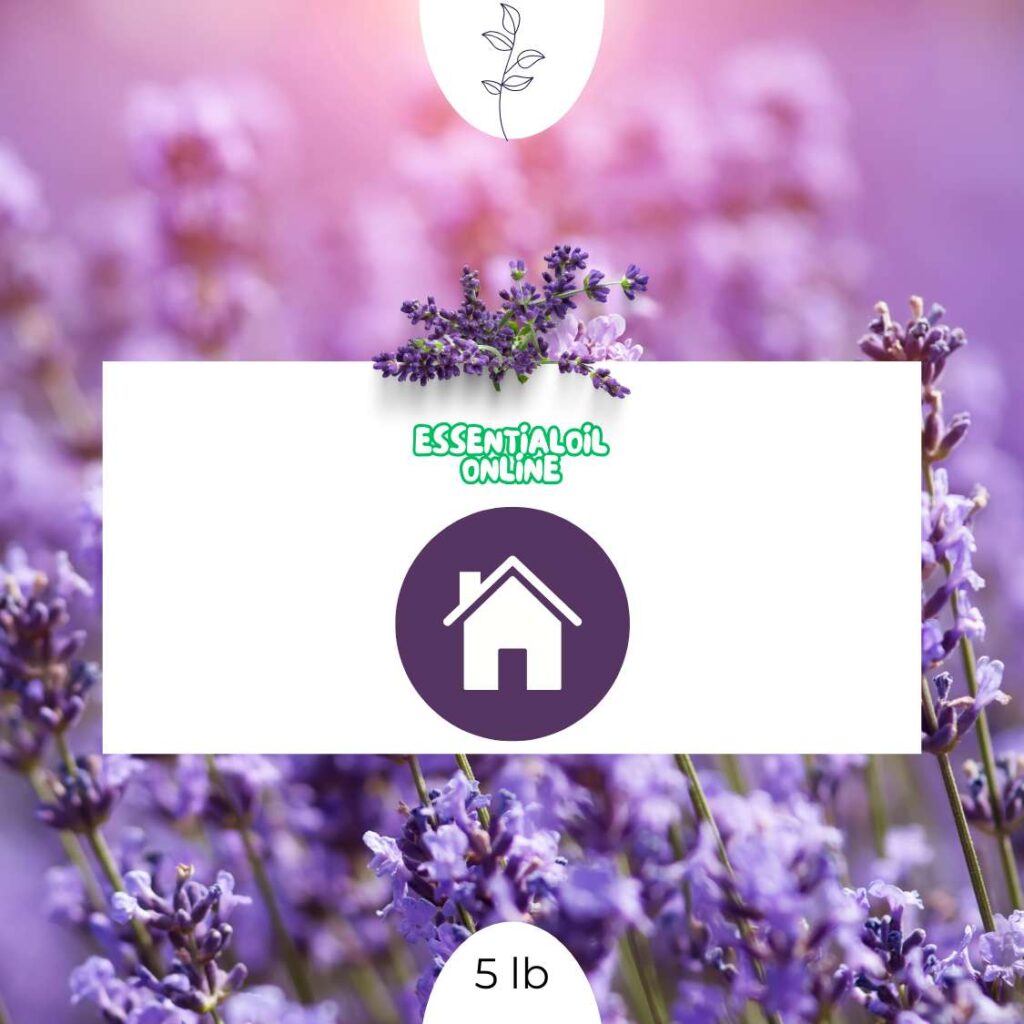Best Smelling Essential Oils for Home
Why Essential Oils Are Popular for Home Fragrance?
When people talk about making a home smell inviting, essential oils almost always come up — and there’s a good reason for it. Unlike synthetic sprays or plug-ins, essential oils offer aroma straight from the plant. Whether it’s the brightness of lemon peel, the warmth of cedarwood, or the sweetness of rose, each oil carries a scent that feels naturally expressive rather than manufactured.
Another reason essential oils have become a go-to choice is the sheer variety of scents you can create. Some oils smell clean and crisp, others feel warm and cozy, and many fall somewhere in between. With just a few bottles, you can build completely different “scent personalities” for your home — fresh in the morning, soft in the evening, bright in the kitchen, warm in the living room.
They’re also easy to use. A diffuser can fill a room with aroma within minutes. A simple DIY room spray can make linens or guest spaces smell fresh. Wax warmers, reed diffusers, and even handcrafted blends give you plenty of ways to experiment without needing advanced skills.
In this guide, we’ll explore some of the best-smelling essential oils for home fragrance, how different scent families work, and how to choose oils that match the atmosphere you want to create — all with a focus purely on aroma, home ambience, and safe aromatic use.
What Makes an Essential Oil “Smell Good”? (Understanding Scent Profiles)
When you pick up an essential oil bottle and take a sniff, your reaction is usually instant — you either like it, love it, or move on. But behind that quick reaction is something much more interesting: every essential oil has its own “aroma personality,” shaped by how fast it evaporates and which scent family it belongs to.
Some oils burst into the air the moment you diffuse them. Citrus oils like lemon and sweet orange do this beautifully — they rise quickly, fill the room fast, and give that bright “just cleaned” feel. These are known as top notes, and they’re usually your first impression of a blend.
Other oils sit quietly in the middle. Florals such as lavender or geranium don’t scream for attention, but they add softness and structure. These are middle notes, and they’re often what makes a scent feel balanced rather than one-dimensional.
Then you have the heavy hitters — the scents that linger after everything else fades. Oils like cedarwood, sandalwood, or patchouli evaporate slowly and stay around the longest. These base notes give a blend its depth and make it feel warm or grounded.
When a scent “smells good,” it’s usually because these three levels work together. A fresh citrus opening, a soft floral heart, and a warm woody base can create a fragrance that feels layered and intentional, even if it’s made from just a few oils.
Understanding these scent profiles makes it much easier to choose oils for your home. You’ll know which oils fill a room quickly, which ones mellow everything out, and which ones leave a lasting impression — and from there, building blends becomes a creative, enjoyable process.
Citrus Essential Oils: The Fastest Way to Make a Home Smell Fresh and Clean
Citrus essential oils remain some of the most universally loved aromas for home fragrance, and it’s not by accident. Chemically speaking, citrus oils are rich in volatile aromatic molecules (primarily limonene), which means they evaporate quickly and disperse throughout a room almost instantly. This is why one or two drops of lemon, orange, or grapefruit can transform the atmosphere of a space faster than almost any other scent family.
But beyond the chemistry, there’s something very intuitive about citrus. The moment you diffuse sweet orange or rub a bit of lemon peel between your fingers, the aroma feels bright, open, and naturally clean — the kind of scent that makes a room feel refreshed without smelling artificial.
Each citrus oil has a distinct personality:
- Lemon delivers a crisp, zesty sharpness that works beautifully in kitchens and entryways.
- Sweet Orange brings a round, fruity sweetness that’s easygoing and universally appealing.
- Grapefruit offers a more tangy sparkle — excellent when you want something energetic but not overpowering.
- Bergamot is technically a citrus, but its subtle floral nuance makes it feel more refined and elegant than typical citrus oils.
- Lime provides a punchy, refreshing aroma ideal for cutting through heavy or stale air.
One reason citrus oils blend so well is that they act like the “top lighting” in a fragrance composition — brightening, lifting, and clarifying the entire aromatic profile. Whether you’re pairing them with florals, herbs, or woods, citrus oils add that instant burst of freshness that makes a home smell lively and cared for.
Used alone, they’re clean and uncomplicated. Used in blends, they become the spark that brings everything else to life.
Floral Essential Oils: Soft, Elegant Scents That Add a Gentle Touch to Any Room
Floral essential oils bring a unique kind of softness to home fragrance. While citrus oils open with brightness, florals settle into a room with a gentler presence — not loud or sharp, but quietly expressive. They’re often the oils people reach for when they want their home to smell welcoming without being overwhelming.
What makes florals so appealing is the complexity of their aroma. Unlike the straightforward freshness of lemon or the deep warmth of cedarwood, floral oils often carry multiple layers within a single drop. A good lavender oil, for example, can smell fresh, slightly sweet, and delicately herbal all at the same time. Geranium has a rosy character with hints of green; ylang-ylang starts sweet and tropical before revealing a creamy richness.
Here are a few of the florals that tend to shine in home fragrance:
- Lavender: Clean, soft, and versatile, lavender works almost anywhere in the home. It has a gentle, freshly washed aroma that pairs well with citrus, herbs, or woods.
- Geranium: Rosy with a touch of green brightness, geranium adds a polished feel without being “perfume-heavy.”
- Jasmine Absolute: Rich, sweet, and lush — just a little jasmine can make a blend feel luxurious.
- Ylang-Ylang: Often used in high-end perfumery, this tropical floral brings warmth and a silky sweetness.
- Rose Absolute: Classic rose adds depth to any floral or citrus blend.
Floral oils work beautifully in bedrooms and living spaces, especially when you want your home to feel soft and thoughtfully scented. They also serve as excellent middle notes in blends, connecting bright top notes with deeper base notes to create a rounded, seamless fragrance.
If citrus oils “wake up” a room, floral oils help it feel balanced and beautifully put together — the aromatic equivalent of fresh flowers on the table.
Woody & Earthy Essential Oils: Warm, Rich Aromas That Make a Home Feel Grounded
If citrus oils brighten a room and florals soften it, woody and earthy essential oils do something entirely different — they anchor it. These are the scents that create depth and warmth, the kind of aromas you notice when you walk into a well-appointed living room or a cozy study. They linger longer than lighter oils, settling into the air with a steady, grounded presence.
What makes woody oils so distinctive is their natural richness. Many come from bark, roots, or resinous hardwoods, so their aroma profiles tend to be warm, smooth, and undeniably comforting without being sweet or overpowering.
A few woody oils stand out for home fragrance:
- Cedarwood: Its warm, slightly dry aroma creates an instant sense of comfort. Cedarwood blends easily with citrus or spice oils, making it one of the most versatile base notes you can own.
- Sandalwood: Smooth, creamy, and soft — sandalwood is often described as “luxurious” for good reason. A small amount can add elegance to any blend.
- Patchouli: Deep and earthy with a subtle sweetness, patchouli adds richness without feeling heavy when used thoughtfully.
- Vetiver: Smoky, woody, and long-lasting, vetiver is the oil that stays in the room long after others have faded. It adds structure to blends and creates a pleasantly grounding aroma.
These oils work amazingly well in living rooms, dens, reading corners, and anywhere you want your space to feel warm and intentionally styled. They also form the backbone of countless diffuser blends because they stabilize top notes that would otherwise disappear too quickly.
Blended with citrus, they create freshness with depth. Blended with florals, they create softness with character. And blended with spices, they produce the warm, cozy scents many people love during cooler seasons.
Herbal & Green Essential Oils: Crisp, Botanical Scents That Bring Freshness Indoors
Herbal and green essential oils add a different kind of freshness to a home—clean, crisp, and just a touch botanical. They don’t have the sweetness of florals or the sparkle of citrus, but instead offer a kind of cool clarity that works beautifully in kitchens, bathrooms, entryways, or anywhere you want the air to feel brisk and renewed.
These oils tend to come from leaves, stems, and aromatic herbs, which gives them their characteristic “green” edge. Imagine walking past a garden right after watering the plants—that slightly sharp, refreshing aroma is exactly what herbal oils capture.
Some of the most popular herbal and green oils for home fragrance include:
- Eucalyptus: Cool and airy with a crisp, clean lift. Eucalyptus is excellent when you want the room to feel open and refreshed.
- Rosemary: Herbal and aromatic with a bright, almost camphorous edge. Rosemary blends beautifully with citrus for a clean, lively scent.
- Tea Tree: Known for its sharp green aroma, tea tree adds a brisk, botanical freshness that works especially well in bathrooms and laundry areas.
- Basil: Sweet, herbal, and slightly spicy — basil essential oil brings a fresh garden-like quality to any blend.
Herbal oils are excellent when paired with citrus oils. The combination creates a “clean home” ambiance that feels natural rather than perfumey. They also help round out woodsy blends by adding a bit of brightness on top.
Best Essential Oils for Each Room in Your Home
Different rooms naturally call for different kinds of scents. The kitchen doesn’t need the same aroma as the bedroom, and the bathroom often benefits from a scent that feels a little crisper or cleaner than what you’d choose for a living space. Understanding how each scent behaves — and where it shines — helps you create a home that smells intentional from room to room rather than random or overpowering.
Living Room: Warm, Balanced & Welcoming
The living room is where most people want a scent that feels inviting without being too bold. Citrus paired with woodsy oils works especially well here. Orange adds brightness, cedarwood brings warmth, and sandalwood or bergamot can soften the overall profile. These blends settle into the room with a quiet, everyday elegance.
Kitchen: Fresh, Bright & Citrus-Forward
Cooking aromas tend to linger, which is why kitchens respond so well to crisp, clean scents. Lemon, lime, and sweet orange are classic choices because they instantly brighten the air. Adding a hint of rosemary or basil gives the fragrance a natural, fresh-herb quality that fits perfectly in a kitchen environment.
Bedroom: Soft, Gentle & Uncluttered Aromas
Bedrooms often benefit from scents that feel soft and harmonious. Lavender, geranium, and vanilla create a gentle aromatic backdrop that doesn’t overpower the room. These florals blend beautifully with small touches of bergamot or cedarwood if you want a little more character.
Bathroom: Crisp, Cool & Refreshing
Bathrooms tend to favor scents that smell clean and airy. Eucalyptus, tea tree, peppermint (if desired), and lime work well because they disperse quickly and give the space a “just refreshed” aroma. Blending them with a bit of citrus keeps the scent light and modern.
Entryway: Bright & Memorable
Your entryway sets the first impression, and a good scent can make the entire home feel more put together. Grapefruit, bergamot, and a touch of cedarwood create a fragrance that’s bright but grounded — something guests notice without it feeling too intentional or perfumey.
Home Office or Workspace: Clean & Focused Atmosphere
Work areas benefit from scents that smell clean and uncluttered. Rosemary, lemon, and soft woods like juniper or cedarwood help create an aromatic environment that feels neat and purposeful — without drifting into any mood or “productivity” claims.
By choosing scents that complement each space, you create a home that smells cohesive and thoughtfully arranged. Instead of one overpowering aroma throughout the house, each room has its own gentle signature, and the transitions between spaces feel natural and seamless.
How to Choose Essential Oils Based on Scent Strength
Not all essential oils behave the same once they’re in the air. Some burst forward immediately, filling the room within seconds, while others sit quietly in the background and reveal themselves slowly. Understanding these differences is the key to choosing oils that match the kind of fragrance experience you want in your home.
Every essential oil naturally falls into one of three “aroma speeds”: fast, medium, or slow. These aren’t technical terms—you won’t find them printed on bottles—but they’re incredibly helpful when you’re deciding what to diffuse.
Fast-evaporating oils, like lemon, lime, and peppermint, are top notes. They’re the first scents you notice and the first to fade. If you want a room to smell instantly bright or freshly aired out, these are the oils that do the heavy lifting. They’re perfect for quick refreshes or when guests are about to arrive and you want an immediate burst of fragrance.
Medium-evaporating oils, such as lavender, rosemary, and geranium, are your middle notes. They don’t rush into the air the way citrus does, but once they’re present, they help carry the fragrance more evenly. These oils are great when you want a balanced, steady scent that isn’t too sharp or too heavy.
Slow-evaporating oils—the base notes like cedarwood, vetiver, and patchouli—are the anchors. They stick around long after the lighter scents fade. You may not notice them immediately, but they add depth and keep a blend from feeling flat. If you enjoy a scent that lingers in the room after the diffuser turns off, base notes are essential.
Choosing oils based on scent strength is mostly about understanding what you want your space to smell like and how long you want that scent to last. If you prefer a fragrance that stays noticeable for hours, blend in a few base notes. If you want something bright and quick, lean heavily on top notes. And if you want a room to smell polished and layered—almost like a subtle natural perfume—combine all three.
Once you start paying attention to how these scent strengths behave, you’ll find it much easier to create blends that feel intentional, balanced, and tailored to your home.




